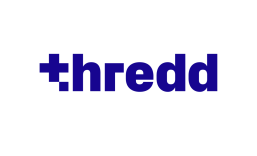To get a glimpse of what the future of government procurement within the European Union will look like, one need look no further than PEPPOL (Pan-European Public Procurement Online), which is at the heart of the region’s eProcurement strategy.
That’s according to someone who would know—Nellie Kroes, vice president of the European Commission and the person who is responsible for Europe’s digital agenda. In a recent blog post, Kroes and one of her advisers, Christian Lanng, acknowledge the difference PEPPOL is having both on the UK’s National Health Service (NHS) and in various other countries’ procurement initiatives.
The European Council in April approved the EU directive on eInvoicing in public procurement. The directive’s objective is to remove cross-border barriers to interoperability brought on by disparate national rules and standards. It also clarifies that the developments of the European standard will have to take into account the results of large-scale pilots such as PEPPOL, according to a post on the PEPPOL website.
Since 2008, PEPPOL has been developing and implementing technology standards to align business processes for electronic procurement across all governments within Europe. Its goal is to expand market connectivity and interoperability between eProcurement communities.
PEPPOL enables access to its standards-based IT transport infrastructure through access points, and it provides services for eProcurement with standardized electronic document formats. Its vision is to enable businesses to communicate electronically with any European government institution in the procurement process, increasing efficiencies and reducing costs.
The NHS’s efforts and other early adopters of PEPPOL and GS1 health care standards will result in substantial savings, efficiency improvements, and greater supplier enablement, Lanng noted in his post. “It is a big step forward for interoperable public-sector services. An eProcurement reality can boost EU competitiveness because it will usher in new cross-border market opportunities,” he said. “By the end of 2015-16, NHS trusts are projected to cut £1.5 billion (US$2.4 billion) of procurement efficiencies by stabilizing their non-pay spending.”
Advertisement: Scroll to Continue
Others, however, are further along in the process, Lanng noted. Scotland, for example, has delivered social and environmental benefits, stimulated growth, and removed barriers to access for competitive small and midsize enterprises (SMEs). Some 46 percent of procurement spend goes to SMEs, with half of that going to companies with less than 50 people, he said.
Ireland similarly has made a commitment to PEPPOL, as last year Minister Brian Hayes formally launched the first Irish government and public sector eInvoicing project, Lanng noted. “The country is on the path to having all public-sector authorities use eInvoicing through PEPPOL by 2016,” he said, noting one vendor has said eInvoicing can reduce the cost of doing business in Ireland by €250 million (US$324 million) annually.
In Norway, Lanng said, more than 2.7 million eInvoices were exchanged using PEPPOL, with 1.4 million occurring within the first three months of 2014. And in Sweden, which is one of four PEPPOL Authority nations, the private sector such as the construction industry is currently testing PEPPOL-based solutions, he added.
Indeed, Lanng notes in his post, the timing of the UK Department of Health’s adoption of PEPPOL could accelerate the economic recovery in EU member countries. “With billions of euros tied up in supply-chain paperwork, small and medium-sized businesses stand to benefit from faster, digitized procurement transactions,” he said, calling PEPPOL “a rising star” among EU public-sector programs.




